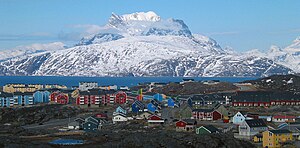
WEIGHT: 46 kg
Breast: E
One HOUR:70$
Overnight: +60$
Services: Anal Play, Striptease amateur, Pole Dancing, Deep throating, Disabled Clients
The site has a long history of habitation. The area around Nuuk was first occupied by the ancient pre-Inuit, Paleo-Eskimo people of the Saqqaq culture as far back as BC when they lived in the area around the now abandoned settlement of Qoornoq. For a long time, it was occupied by the Dorset culture around the former settlement of Kangeq but they disappeared from the Nuuk district before AD The Nuuk area was later inhabited by Viking explorers in the 10th century Western Settlement , and shortly thereafter by Inuit peoples.
Inuit and Norsemen both lived with little interaction in this area from about until the disappearance of the Norse settlement for uncertain reasons during the 15th century. The city proper was founded as the fort of Godt-Haab in by the royal governor Claus Paarss, when he relocated the missionary and merchant Hans Egede's earlier Hope Colony Haabets Koloni from Kangeq Island to the mainland. At that time, Greenland was formally still a Danish colony under the united Dano-Norwegian Crown, but the colony had not had any contact for over three centuries.

Paarss's colonists consisted of mutinous soldiers, convicts, and prostitutes and most died within the first year of scurvy and other ailments.
In and , a smallpox epidemic killed most of the native population as well as Egede's wife. Hans Egede went back to Denmark in after 15 years in Greenland, leaving his son Poul to continue his work. Godthaab became the seat of government for the Danish colony of South Greenland, while Godhavn modern Qeqertarsuaq was the capital of North Greenland until when the administration was unified in Godthaab.

In , Moravian missionaries received permission to begin a mission on the island; in , there were enough converts to prompt the construction of the Moravian Brethren Mission House and the formal establishment of the mission as New Herrnhut Danish: Nye-Hernhut.



































